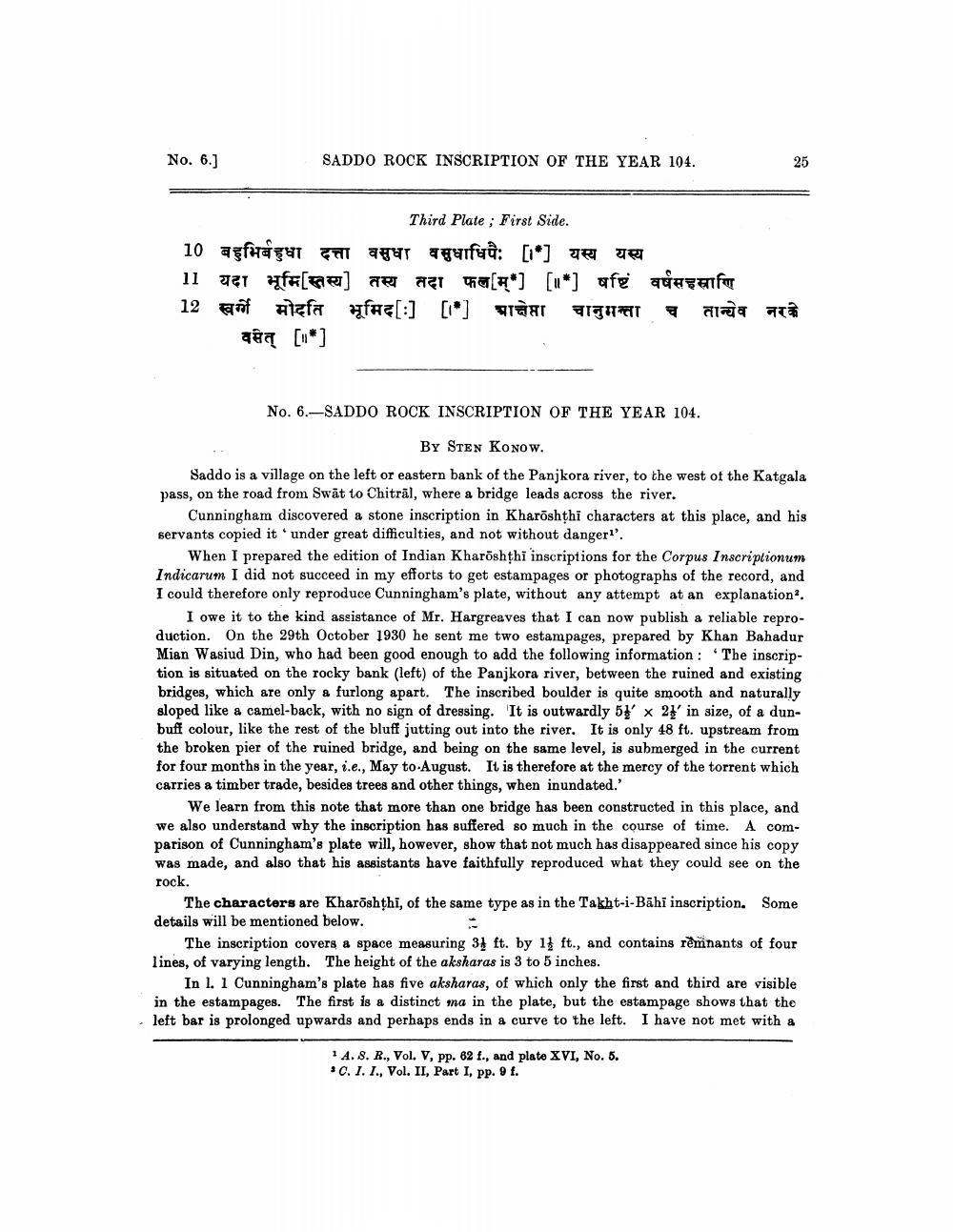________________
No. 6.]
SADDO ROCK INSCRIPTION OF THE YEAR 104.
25
Third Plate ; First Side. 10 agfrau II a aquifuù: [1] yeye 11 gel [per aerazi 069[**] [*1 afg adatafa 12 at Algfa faz[:] [*]
1997 aina ar Gêną [.*]
No. 6.-SADDO ROCK INSCRIPTION OF THE YEAR 104.
BY STEN KONOW. Saddo is a village on the left or eastern bank of the Panjkora river, to the west of the Katgala pass, on the road from Swāt to Chitrāl, where a bridge leads across the river.
Cunningham discovered a stone inscription in Kharoshthi characters at this place, and his servants copied it under great difficulties, and not without danger?'.
When I prepared the edition of Indian Kharoshthi inscriptions for the Corpus Inscriptionum Indicarum I did not succeed in my efforts to get estampages or photographs of the record, and I could therefore only reproduce Cunningham's plate, without any attempt at an explanation.
I owe it to the kind assistance of Mr. Hargreaves that I can now publish a reliable reproduction. On the 29th October 1930 he sent me two estampages, prepared by Khan Bahadur Mian Wasiud Din, who had been good enough to add the following information: The inscription is situated on the rocky bank (left) of the Panjkora river, between the ruined and existing bridges, which are only a furlong apart. The inscribed boulder is quite smooth and naturally sloped like a camel-back, with no sign of dressing. It is outwardly 58' x 21' in size, of a dunbuff colour, like the rest of the bluff jutting out into the river. It is only 48 ft. upstream from the broken pier of the ruined bridge, and being on the same level, is submerged in the current for four months in the year, i.e., May to August. It is therefore at the mercy of the torrent which carries a timber trade, besides trees and other things, when inundated.'
We learn from this note that more than one bridge has been constructed in this place, and we also understand why the inscription has suffered so much in the course of time. A comparison of Cunningham's plate will, however, show that not much has disappeared since his copy was made, and also that his assistants have faithfully reproduced what they could see on the rock.
The characters are Kharoshthi, of the same type as in the Takht-i-Bāhi inscription. Some details will be mentioned below.
The inscription covers a space measuring 31 ft. by 1} ft., and contains remnants of four lines, of varying length. The height of the aksharas is 3 to 5 inches.
In l. 1 Cunningham's plate has five aksharas, of which only the first and third are visible in the estampages. The first is a distinct ma in the plate, but the estampage shows that the • left bar is prolonged upwards and perhaps ends in a curve to the left. I have not met with a
14.8. R., Vol. V, pp. 62 f., and plate XVI, No. 5. *C. I. I., Vol. II, Part I, pp. 9 f.




